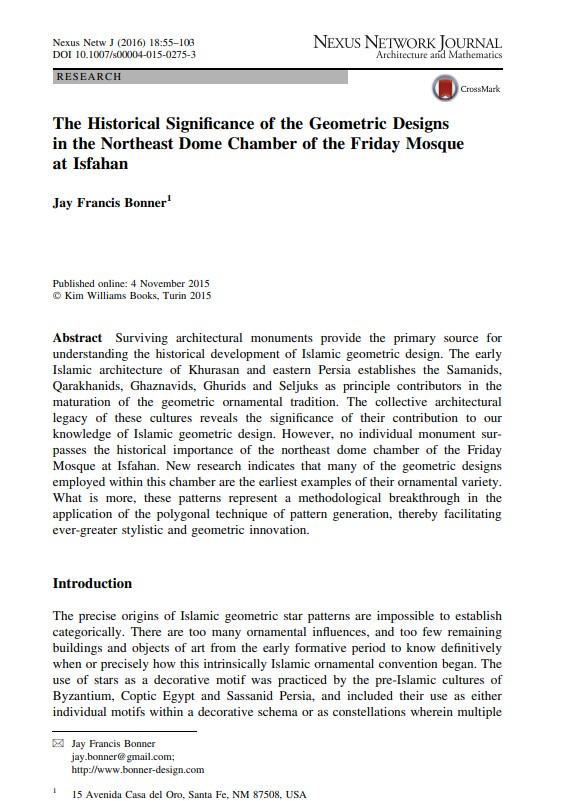
Surviving architectural monuments provide the primary source for
understanding the historical development of Islamic geometric design. The early
Islamic architecture of Khurasan and eastern Persia establishes the Samanids,
Qarakhanids, Ghaznavids, Ghurids and Seljuks as principle contributors in the
maturation of the geometric ornamental tradition. The collective architectural
legacy of these cultures reveals the significance of their contribution to our
knowledge of Islamic geometric design. However, no individual monument surpasses the historical importance of the northeast dome chamber of the Friday
Mosque at Isfahan. New research indicates that many of the geometric designs
employed within this chamber are the earliest examples of their ornamental variety.
What is more, these patterns represent a methodological breakthrough in the
application of the polygonal technique of pattern generation, thereby facilitating
ever-greater stylistic and geometric innovation.
I agree to the terms outlined below:
You agree to upload and assign Mosqpedia Database the rights to use the content worldwide and in perpetuity across all current and future media platforms. Mosqpedia Database may edit, copy, adapt and translate your contribution.
The content will be distributed under the Creative Commons Attribution-Deed – Attribution-NonCommercial-NoDerivatives 4.0 International – Creative Commons
All data will be stored in line with data protection regulations.